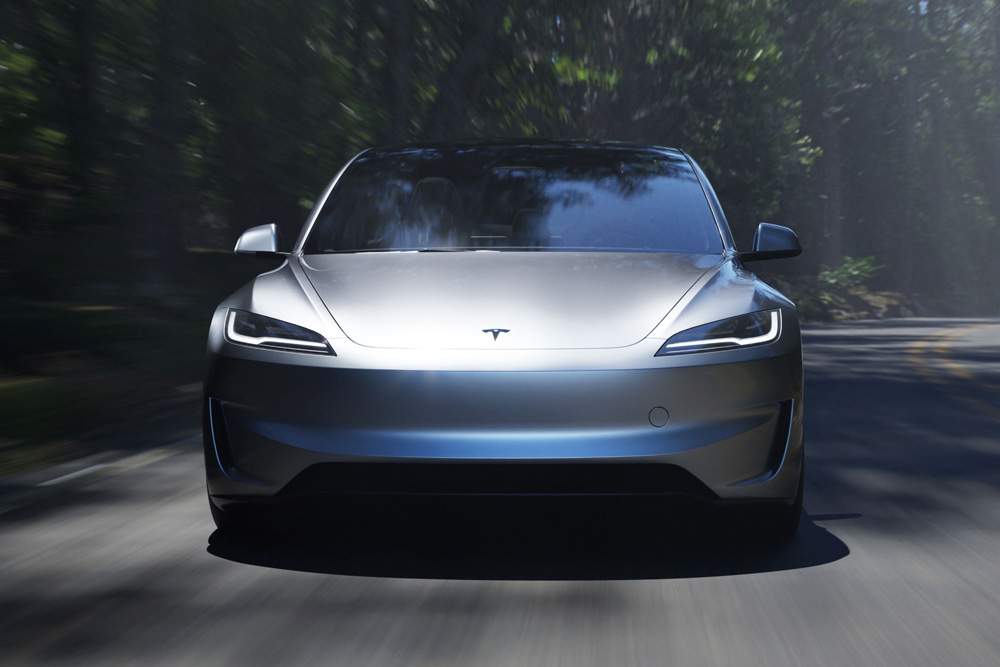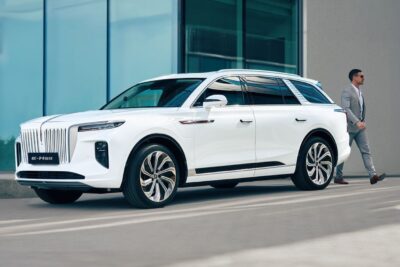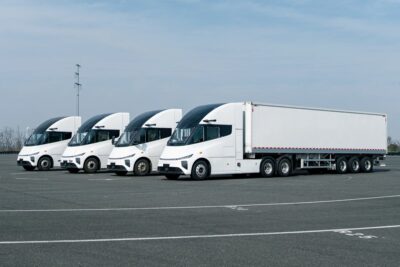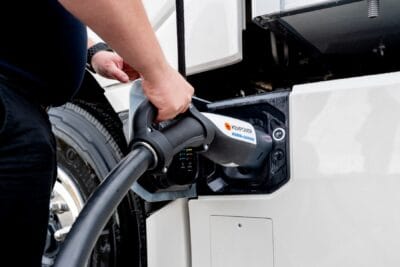Tesla reports higher profit again
Tesla said it was still “two major growth waves” in the first quarter of 2024. The first, which began with the Model 3 and continued with the Model Y as one of the world’s best-selling electric cars, is slowly but steadily ebbing away. The next wave, defined by more affordable and increasingly self-driving electric cars, has yet to really pick up speed.
The balance sheet reflects this: Tesla reported a turnover of 25.5 billion dollars, while the company’s earnings totalled $1.48 billion in the second quarter. These sound like respectable figures, especially given the recent past. In Q2 2023, when Tesla was still trying to keep sales high with discount campaigns at the expense of margins, revenue was still just under 25 billion dollars. At the start of 2024, when deliveries were already declining, it was still 21.3 billion dollars. The sales trend is therefore pointing slightly upwards again. However, this is not due to the car business, where turnover fell by 7% to $19.88 billion over the year as a whole (after 21.27 billion dollars in Q2 2023). The service division ($2.6 billion) saw revenue increase by 21 per cent. The Energy Generation and Storage division doubled its revenue and generated $3 billion, contributing to a slight overall growth in revenue of 2%.
Earnings down 45 per cent YoY
It is not known whether this also applies to earnings, as Tesla does not break that down by division. With “a net income attributable to common stockholders (GAAP)” of 1.48 billion dollars, Tesla surpassed the result from Q1 2024 (1.13 billion dollars). However, it was not enough to match the $2.7 billion GAAP earnings from the same quarter of last year – with comparable sales, mind you – instead, it is 45 per cent less. However, Tesla was able to prevent a further drop in profit to less than one billion dollars.
Even the margins of 16 per cent achieved in the last quarter are currently out of reach. After 5.5 per cent in the first quarter, Tesla has now reached 5.8 per cent. In terms of profitability, Tesla claims to benefit from lower costs per vehicle, for example, in the purchase of materials, freight and customs duties. The costs of its own 4680 cells are also expected to fall. However, the lower ‘S3XY’ sales and prices are cited as a negative factor. Higher profits offset the costs of restructuring (and job cuts) and expenditure on AI projects. Incidentally, the AI projects include robotics and further development of “Full Self Driving” (FSD).
The fact that the second quarter is likely to be rather difficult in terms of business figures was foreshadowed by the production and delivery figures announced at the beginning of July. Tesla produced 410,831 vehicles in the second quarter and delivered a total of 443,956 to customers. The situation in the first quarter can explain the surplus in deliveries. At that time, Tesla had built around 46,500 more vehicles than it had delivered by the end of the quarter. Some of the deliveries fell into the second quarter for logistical reasons. Incidentally, according to Telsa, revenue from sales of the ‘S3XY’ models is also declining, but the share of Cybertruck sales is increasing. However, this is not backed up by figures – the Cybertruck, the Model S and Model X fall under “other” models.
After the first six months, Tesla’s results for the current year are below those of 2023. So far, 844,202 Teslas have been built this year, and 830,766 have been delivered. By the end of June 2023, Tesla had already built 920,508 cars, of which 889,015 had been delivered. That means production is down 8.3 per cent compared to the previous year, while deliveries are down 6.6 per cent.
There is no significant change in production. Tesla can build 100,000 Model S/Xs at its former main plant in Fremont, plus over 550,000 Model 3/Ys – Tesla is satisfied with the ramp-up of the Model 3 Highland in Fremont. In the US, Tesla can also build up to 250,000 Model Ys in Giga Texas, while the Cybertruck has a capacity of over 125,000 vehicles. However, it is unclear how the plants are being utilised. Nevertheless, Tesla states that Cybertruck production tripled in Q2.
At Giga Berlin in Grünheide, Germany, Tesla can build more than 375,000 Model Ys per year; this figure has not changed either. The largest Tesla plant by far, however, is Giga Shanghai, where the car manufacturer claims to have a capacity of over 950,000 Model Y and Model 3 Highland. Tesla is somewhat cryptic about this plant. “While the automotive market in China remains among the most competitive globally, we feel that our cost structure and focus on core functionality that drives value for customers – including autonomy – position us well for the long-term.”
Tesla expects lower growth than in 2023
Production of the Semi electric truck in Nevada continues as ‘pilot production’ with no specified capacity. Tesla is also not providing any new information on the “Next Gen Platform” or the Roadster. However, developers are focussing on the next-generation vehicles. “Our company is currently between two major growth waves: the first one began with the global expansion of the Model 3/Y platform and we believe the next one will be initiated by advances in autonomy and introduction of new products, including those built on our next generation vehicle platform. In 2024, our vehicle volume growth rate may be notably lower than the growth rate achieved in 2023, as our teams work on the launch of the next generation vehicle and other products,” Tesla writes.
In other areas, Tesla’s car business is growing steadily. The number of Tesla locations increased by 12 per cent year over year to 1,286 locations, while the Mobile Service fleet grew by seven per cent to 1,896 vehicles. And for Superchargers, there are now 6,473 locations (+23 per cent) with 59,596 charging points (+24 per cent).
Let’s take a quick look at the stationary energy storage business. Tesla reported 9.4 GWh of installed capacity in Q2, compared to 4.1 GWh in the first quarter. The growth is due to records for both Powerwalls and Megapacks. The Shanghai Megafactory for stationary storage is also scheduled to go into operation in Q1 2025. Tesla intends to use this to increase production further but expects installations to continue to fluctuate significantly. However, the business segment is becoming increasingly important. “In 2024, the growth rates of energy storage deployments and revenue in our Energy Generation and Storage business should outpace the Automotive business,” says Tesla.
tesla.com (PDF)





0 Comments